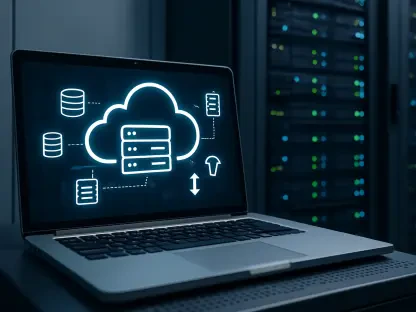The ever-evolving landscape of cybercrime has seen the rise of information-stealing malware, commonly known as infostealers, which have significantly altered the way cyberattacks are executed. Over the past year, the impact of these malicious tools has been profound, with 2.1 billion credentials stolen from a total of 3.2 billion pilfered worldwide. This startling statistic marks a 33% increase in stolen credentials compared to the previous year. Infostealers have become a versatile arsenal for cybercriminals, playing a key role in account takeovers, data breaches, and even facilitating initial access for ransomware attacks, especially in vital sectors such as supply chains and critical infrastructure.
The Potency of Infostealers in Cybercrime
Detailed in Flashpoint’s report, infostealers have showcased a formidable capability in stealing valuable credentials, system information, and browser data. This stolen information is often utilized to bypass security measures, enabling attackers to move laterally within systems and escalate their privileges. Researchers have tracked a staggering 23 million infections across various hosts and devices. A significant proportion of these infections have occurred on systems running Microsoft Windows, largely due to its expansive user base and well-established malware development tools. Though some malware strains also target macOS devices, Windows remains a more profitable and frequent target for cybercriminals.
Flashpoint’s investigation uncovered 24 distinct infostealer strains circulating within underground marketplaces, with Redline emerging as the most prolific, having infected 9.9 million hosts. Other notable strains include RisePro, SteaC, Lumma Stealer, and Meta Stealer. These infostealers possess sophisticated designs aimed at evading specific security controls, rendering them particularly challenging to detect and mitigate. In an alarming incident in April this year, credentials stolen by at least six different strains—including Vidar and Racoon—were used to breach 165 Snowflake customer environments, exposing sensitive records belonging to major enterprises.
How Cybercriminals Exploit Infostealers
The popularity of infostealers among cybercriminals can be attributed to their low cost, ease of use, and wide availability. These attributes allow even single threat actors, devoid of profound technical expertise, to orchestrate significant breaches. Infostealers are adept at collecting a diverse array of information, including system details, saved credit cards, cryptocurrency wallets, autofill information, and active session cookies. Infection generally occurs through mechanisms such as phishing, illegitimate software downloads, and secondary malware payloads, with the gathered data being consolidated into compressed files and dispatched to remote servers. This information can be repurposed for further attacks or sold on the dark web.
The financial accessibility of infostealers also contributes to their widespread use. Last year, the average cost of these tools hovered around $200 per month. This affordability, combined with their efficacy and stealth, prompts their continued deployment by cybercriminals, signaling an ongoing threat to organizational security. The facilitated breaches often pave the way for subsequent ransomware attacks, compounding the adversity faced by affected organizations and individuals.
Future Implications and Defensive Measures
The ongoing evolution of infostealers necessitates robust defensive measures from organizations. Cybersecurity professionals must prioritize the implementation of comprehensive strategies to detect, mitigate, and respond to these threats effectively. This includes enhancing endpoint protection, deploying advanced threat detection systems, and promoting cybersecurity awareness among employees to diminish the risk of phishing attacks. Given the ever-increasing sophistication of infostealer malware, continuous innovation in security technologies and methodologies is paramount to safeguarding organizational assets and sensitive information.
The persistent threat posed by infostealers requires that organizations stay abreast of the latest cybersecurity developments and remain vigilant against potential breaches. Infostealers are likely to maintain their central role in cyberattacks, driven by their low cost, ease of deployment, and ability to circumvent traditional security measures. Therefore, a proactive approach to cybersecurity, encompassing both technological solutions and human-centric training programs, is essential to mitigate the risk and impact of these formidable threats.
As organizations gear up to tackle this sophisticated wave of cybercrime, they must also consider the legal and regulatory implications of data breaches. Ensuring compliance with data protection regulations and working closely with law enforcement agencies can help mitigate the reputational and financial repercussions of such incidents.
Strategies for Bolstering Cybersecurity
The ever-changing world of cybercrime has witnessed a surge in information-stealing malware, known as infostealers, which have dramatically transformed cyberattacks. In the past year alone, the impact of these malicious tools has been immense, with 2.1 billion credentials stolen out of a total of 3.2 billion pilfered globally. This alarming figure signifies a 33% rise in stolen credentials compared to the previous year. Infostealers have become a crucial asset for cybercriminals, being instrumental in account takeovers, data breaches, and even enabling initial access for ransomware attacks. These attacks are notably significant in essential sectors like supply chains and critical infrastructure, where the consequences can be particularly severe. As infostealers evolve, they continue to pose a major threat to cybersecurity, highlighting the urgent need for enhanced protective measures and awareness to combat their growing influence.









